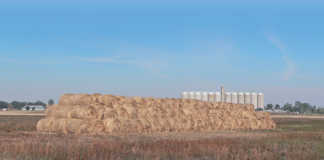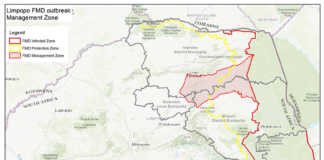While the average increase, granted by the National Energy Regulator of South Africa (Nersa) in February, is substantially down on Eskom’s request for 16%, the increases are adding to an already heavy burden faced by farmers. Eskom spokesperson Hillary Joffe explained why rural costs were higher than urban.
“Eskom’s costs comprise not just energy, but also network and retail costs. For rural customers, the network costs are the largest proportion of the cost to supply, as we have singe lines and single transformers dedicated to supplying one customer, while in urban areas houses are closer together so there is sharing of equipment/network costs. The majority of these costs are subsidised by Eskom’s urban customers and therefore the tariff rural customers pay is actually below the cost of supply,” Joffe said.
Johannes Möller, president of Agri SA, expressed his relief that a 16% increase was not granted, saying administered prices were having an extremely negative impact on the financial position of the agricultural sector, specifically on irrigation farming which was responsible for the bulk of fruit and vegetable production.
Tony Oshray, a cucumber and herb producer from Port Elizabeth, expressed dismay at the administered price increases such as electricity and diesel. “Administered prices have accumulated to the point that any further increases are difficult to handle. The 52% minimum wage increase has been the final nail in the coffin. We have already had to retrench people,” Oshray said.
David Gates, a tunnel flower producer in Baynesfield, KwaZulu-Natal, said he had no choice but to liquidate his business. “Our target is to close shop by the end of May. Energy costs are too high and the 52% wage hike was the final straw. The flower product is just not viable for us.” Gates said agriculture was being tested from multiple angles, including pressure from unresolved land claims and poor labour productivity.
Added to this, as a flower farmer he was not receiving a fair cut of the retail price. “The man in the street is paying substantially more than the farm gate price. We sell our product (chrysanthemums) for R7 to the wholesalers, yet our products retail at R29 to R49. The minimum mark-up we see from wholesalers is 100%, and 200% when they can get away with it,” Gates said.
Milk Producers Organisation CEO Bertus de Jongh said a similar scenario was playing out in the milk industry, which was a high-end user of electricity. “There is an increasing gap between the retail price and producer price. The South African milk producer price happens to be one of the lowest in the world but the retail price of milk is one of the most expensive in the world. We think government will have to look at this gap. Farmers are taking a big hiding. We get about a third of the retail price at the moment, whereas 20 years ago we used to get 60%.”
De Jongh said all administered prices were playing a big role in farmers’ lives, especially on dairy farmers in regions like the Free State, Northern Cape and Tsitsikamma who were battling with drought conditions and uncertain feed supply. “We think it is going to be a difficult winter unless milk prices increase substantially. Fortunately we are starting to see small increases in producer prices but not at sufficient levels to cover losses experienced over the past four years,” De Jongh said.












